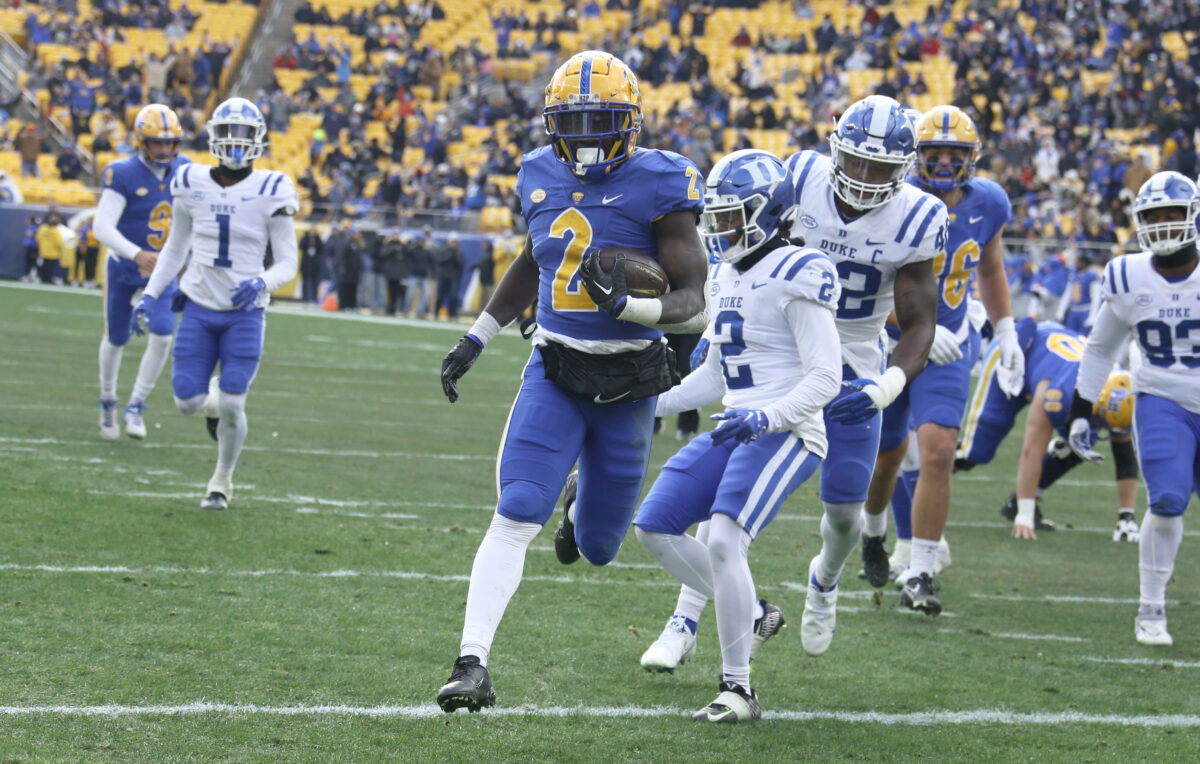Pittsburgh running back Israel Abanikanda skipped the Sun Bowl and opted for the NFL after his breakout junior season. The explosive rusher produced the most total touchdowns in the nation and led the ACC in offensive yards (1,577) as well as rushing yards (1,431) in 2022.
The highlight of his junior season was a 320-yard, six-touchdown performance against Virginia Tech. Perhaps more impressively, the man known as “Izzy” rushed for at least 111 yards and a score in the next five contests. Abanikanda won first-team All-ACC honors to cap off the season, and he also garnered third-team Associated Press All-American status.
Height: 5-foot-10
Weight: 216 pounds
40 time: N/A
Abanikanda won two gold medals in the 100-meter dash in New York and added a bronze to his hardware collection. His father ran track at Georgia Tech, and his brother, Michael, played football for Buffalo and Temple.
Table: Israel Abanikanda stats (2020-22)
*includes postseason/bowl games (stats from Sports Reference)
Pros
- Impressive straight-line speed to take it to the house and has excellent initial burst to get to the edge
- Well-built frame with considerable muscle definition
- Limited use prior to 2022 has kept his odometer low on mileage
- Optimal upside in a zone-blocking system thanks to an effective jump-cut
- Will be only 20 years old come Week 1
- Special teams experience and success
- Highly competitive
[lawrence-related id=464715]
Cons
- Limited exposure in the passing game makes him a project to be more than a two-down option
- Doesn’t present much wiggle in the open field — may prove to be too reliant on his speed vs. NFL defenders where everyone is fast
- Needs to better patience and the ability to play off of blocks
- Effort blocker but lacks technique
Fantasy football outlook
Abanikanda’s athletic profile reminds of Marlon Mack. Both share the same general build and excellent speed as assets as well as deficiencies as a receiver. That may sound like a negative with how Mack’s career has played out, but we haven’t see the same durability concerns from this incoming rookie.
Given Izzy’s limitations and the positional devaluation, he is likely a midround pick in April’s draft. The system fit for Abanikanda is more important than with most backs; his upside will be impacted if not drafted by a team that employs a zone-blocking scheme. There’s just not enough variety in his skill set to see him as more than a two-down back in a one-cut-and-go design.
The lack of receiving chops also pigeonholes his utility, so efficiency on the ground will be a must if he’s to contribute in fantasy football. Such a low-volume, high-efficiency role makes for a risky, inconsistent play from week to week.
Now, if Abanikanda earns the early-down share of a backfield split, which could take a year or two, he becomes an intriguing gamble for RB2 or flex returns. It’s tough to see him entering a primary role out of the gates, and gamers should earmark Izzy as depth for dynasty leagues before expecting immediate results.
